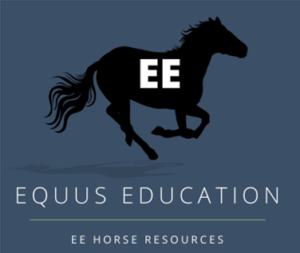I recently heard about Ashley through an equine business group on Facebook. Ashley was kind enough to answer some questions about her career as a barefoot hoof trimmer. Read below.
How much of your day/week is related to horses?
Between Furler Equine and Marley, at least half of my day is usually spent with horses. And in true horse girl style, much of the rest of my day is spent reading, writing and talking about horses online or with my husband and friends.
What is it exactly that you do?
I’m a barefoot hoof trimmer, and online equine store owner although I have only found enough time to list one item in my store so far. But it will grow!
In this field of work, is it possible to be a full-time professional and earning a liveable income?
Absolutely. Farriers and barefoot hoof trimmers are in very high demand and most people struggle to find one that suits them and their horse or that is willing to come often enough for their horses’ needs.
I’ve heard many times that clients have had trouble with farriers/BFTs simply because they won’t answer their messages. If you are an:
- effective communicator,
- good at responding,
- consistent with your online content,
- good at what you do
- and have done your local research to see if there is need of another hoofcare worker, there’s no reason you shouldn’t get as much work as you need.
What are the general steps taken to be employed in such a role?
Hoof trimming is something that you need to be passionate about to do for work as there aren’t many employment opportunities for trimmers. So you will most likely need to run your own trimming business.
It is also very hard physically and takes a lot of patience. It takes a bit to learn as the courses aren’t easily accessible all over Australia, and you need to get it right for the horse or you can do a lot of damage.
To be a farrier you do an apprenticeship under a master farrier. This is where you learn to do shoes and it’s a different philosophy of care to barefoot hoof trimming. To become a barefoot hoof trimmer, there are multiple courses online and small courses that pop up around Australia.
The only certified one I know of here is ACEHP’s 12-month course which has an in person element down in Tasmania then the rest of the course is done working with your local ACEHP trimmers.

I find the best place to start learning is with your own trimmer/farrier and once you feel confident and know the theory to keep your horse safe, practise on your own horse. Many hoof trimmers, including myself, are happy to teach you some basics while out doing your horses’ hooves. Ask a lot of questions.
Learn what a good trim is through reputable online learning sources like David Landerville, Progressive Equine Services and Hoofcare and The Equine Documentalist. Don’t just take your trimmers word for it, do your own research. Just like with the rest of the horse industry, there’s no standardisation of protocol.
Everyone has they’re own ways of doing things and not all of them are beneficial to the horse. Learn why they’re doing what they’re doing and if it can be done in a way more beneficial to the horse.
Profile On: Ashley Furler, Barefoot Hoof Trimmer
Once you have done the course in barefoot hoof trimming, practise, practise and practise some more! Keep learning from other trimmers as much as you can, never stop learning.
Finally, if you’ve never done a business course or run a successful busness, I would highly recommend such a course, as the hard truth is statistically, most new businesses fail. Yet another reason you need to be passionate to make it work. I’m doing a business course through TAFE Queensland and also network with other horse business people for support.
Favourite horse memory?
Seeing my brumby mare, Marley, for the first time. I got her from a brumby rescue where I was lucky enough to be the first to choose her out of the lot. I saw her straight away and just loved her.
She is a blue roan so she stood out and she seemed to be taking care of the other horses who were a bit scared since they weren’t sure what was happening. I sensed an instant mother-like vibe about her. She is caring, nurturing and kind and I just loved her straight away.
Future goals?
For Marley, we are just about to buy our first acreage. This has been my goal for the over 4 years that I’ve had her, finally living with my mare and find her another horse friend for company.
For my business, I’m wanting to focus it more online in the future; create courses, sell products, sell books if I can ever finish writing one! I also would love to run hoof trimming courses/clinics from our property.
Best thing about your sport/profession?
It’s absolutely fascinating and you never stop learning. Hooves are incredible structures and a good trim and right advice followed by the owner, makes the world of difference to the horse. It’s very rewarding seeing the improvement in their hooves.




